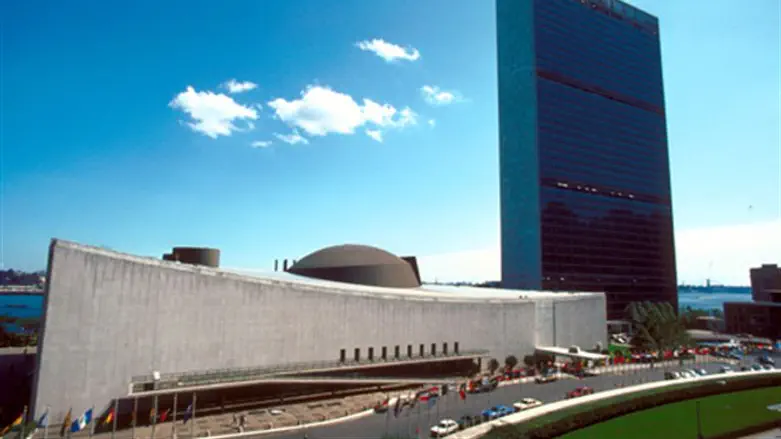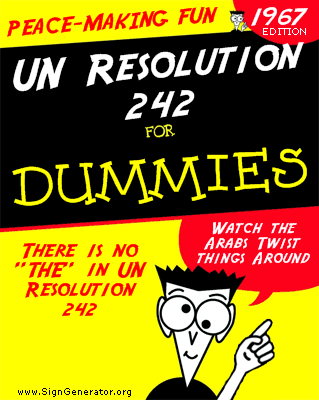
By July 1st, 2020, Israeli PM Netanyahu has promised to apply Israeli civil law to the areas in Judea/Samaria outlined by President Trump’s “Peace to Prosperity,” peace plan. Note it’s applying Israeli civil law, not a formal annexation (which will include a land swap). An annexation will happen after the Palestinians agree to make peace.
Roughly, the areas that will fall under Israeli civil law will include all Israeli communities on the west bank of the Jordan River along with some of the land surrounding them and the entire Jordan Valley. The final borders of the areas to be under Israeli law are still being worked out between Israel and the United States.
The EU, Jordan, and other countries are already complaining about the Israeli move. Some of them are pointing to UN Resolution 242, claiming that it states Israel has to withdraw to the pre-1967 borders, But that’s not what the Resolution says.
They claim that the wording of 242 calls for Israel to withdraw from “the” territories taken during the Six-Day War. The resolution actually says that ‘Israel should withdraw from territories’ taken during the war (no “the”). If it included that, “the” the resolution would mean all territories.
It was no accident “the” was left out. Diplomats are very exact in their language. During the negotiations to create resolution 242, Arab governments tried three times to have “the” inserted into the resolution, and their request was rejected. But, by repeating what they wanted the resolution to say all these years, the Arabs succeed in convincing many people to accept their distorted interpretation of 242.ta
However, if you read the statements of the drafters of the resolution there is no ambiguity about what they meant. Below are those statements by country and participant:
United Kingdom
Lord Caradon, the sponsor of the draft that was about to be adopted, stated, before the vote in the Security Council on Resolution 242:
“… the draft Resolution is a balanced whole. To add to it or to detract from it would destroy the balance and also destroy the wide measure of agreement we have achieved together. It must be considered as a whole as it stands. I suggest that we have reached the stage when most, if not all, of us, want the draft Resolution, the whole draft Resolution, and nothing but the draft Resolution.” (S/PV 1382, p. 31, of 22.11.67)
Interviewed on Kol Israel in February 1973 Lord Caradon was specific:
Question: “This matter of the (definite) article which is there in French and is missing in English, is that really significant?”
Answer: “The purposes are perfectly clear; the principle is stated in the preamble, the necessity for withdrawal is stated in the operative section. And then the essential phrase which is not sufficiently recognized is that withdrawal should take place to secure and recognized boundaries, and these words were very carefully chosen: they have to be secure and they have to be recognized. They will not be secure unless they are recognized. And that is why one has to work for agreement. This is essential. I would defend absolutely what we did. It was not for us to lay down exactly where the border should be. I know the 1967 border very well. It is not a satisfactory border, it is where troops had to stop in 1947, just where they happened to be that night, that is not a permanent boundary… “
Mr. Michael Stewart, Secretary of State for Foreign and Commonwealth Affairs, in reply to a question in Parliament, November 17th, 1969:
Question: “What is the British interpretation of the wording of the 1967 Resolution? Does the Right Honourable Gentleman understand it to mean that the Israelis should withdraw from all territories taken in the late war?”
Mr. Stewart: “No, Sir. That is not the phrase used in the Resolution. The Resolution speaks of secure and recognized boundaries. These words must be read concurrently with the statement on withdrawal.”
Mr. Michael Stewart, Secretary of State for Foreign and Commonwealth Affairs, in reply to a question in Parliament, December 9th, 1969:
“As I have explained before, there is a reference, in the vital United Nations Security Council Resolution, both to withdrawal from territories and to secure and recognized boundaries. As I have told the House previously, we believe that these two things should be read concurrently and that the omission of the word ‘all’ before the word ‘territories’ is deliberate.“
Mr. George Brown, British Foreign Secretary in 1967, on January 19th, 1970:
“I have been asked over and over again to clarify, modify, or improve the wording, but I do not intend to do that. The phrasing of the Resolution was very carefully worked out, and it was a difficult and complicated exercise to get it accepted by the UN Security Council. “I formulated the Security Council Resolution. Before we submitted it to the Council, we showed it to Arab leaders. The proposal said ‘Israel will withdraw from territories that were occupied’, and not from ‘the’ territories, which means that Israel will not withdraw from all the territories.” (The Jerusalem Post, 23.1.70)
United States of America
Mr. Arthur Goldberg, US representative, in the Security Council in the course of the discussions which preceded the adoption of Resolution 242:
“To seek withdrawal without secure and recognized boundaries … would be just as fruitless as to seek secure and recognized boundaries without withdrawal. Historically, there have never been secure or recognized boundaries in the area. Neither the armistice lines of 1949 nor the cease-fire lines of 1967 have answered that description… such boundaries have yet to be agreed upon. An agreement on that point is an absolute essential to a just and lasting peace just as withdrawal is… ” (S/PV. 1377, p. 37, of 15. 11.67)
Mr. Joseph Sisco, Assistant Secretary of State, July 12th, 1970 (NBC “Meet the Press”):
“That Resolution did not say ‘withdrawal to the pre-June 5 lines’. The Resolution said that the parties must negotiate to achieve agreement on the so-called final secure and recognized borders. In other words, the question of the final borders is a matter of negotiations between the parties.”
Eugene V. Rostow, Professor of Law and Public Affairs, Yale University, who, in 1967, was US Under-Secretary of State for Political Affairs:
“… Paragraph 1 (i) of the Resolution calls for the withdrawal of Israeli armed forces ‘from territories occupied in the recent conflict’, and not ‘from the territories occupied in the recent conflict’. Repeated attempts to amend this sentence by inserting the word ‘the’ failed in the Security Council. It is, therefore, not legally possible to assert that the provision requires Israeli withdrawal from all the territories now occupied under the cease-fire resolutions to the Armistice Demarcation lines.” (American Journal of International Law, Volume 64, September 1970, p. 69)
USSR
Mr. Vasily Kuznetsov said in the debate that preceded the adoption of Resolution 242:
“… Phrases such as ‘secure and recognized boundaries’. What does that mean? What boundaries are these? Secure, recognized – by whom, for what? Who is going to judge how secure they are? Who must recognize them? … There is certainly much leeway for different interpretations which retain for Israel the right to establish new boundaries and to withdraw its troops only as far as the lines which it judges convenient.” (S/PV. 1373, p. 112, of 9.11.67)
Brazil
Mr. Geraldo de Carvalho Silos, Brazilian representative, speaking in the Security Council after the adoption of Resolution 242:
“We keep constantly in mind that a just and lasting peace in the Middle East has necessarily to be based on secure, permanent boundaries freely agreed upon and negotiated by the neighboring States.” (S/PV. 1382, p. 66,22.11.67 )
Soon you will hear it over and over from diplomats, politicians, terrorists, and newsmen. They will claim that Resolution 242 calls for Israel to withdraw from all the territories it won in the Six Day War. When thy do, please send them a copy of this article with a note telling them to read carefully.
Or if anyone publishes the book below, you can send them a copy.

Reposted with permission from The Lid.
Jeff Dunetz is the editor/publisher of the blog "The Lid," and is also a contributing reporter to TruthRevolt.org and MRCTV.org. He is the political columnist for The Jewish Star, and co-host of the weekly radio show, The Hump Day News Report on the 405 Radio Network.